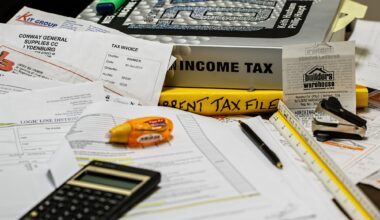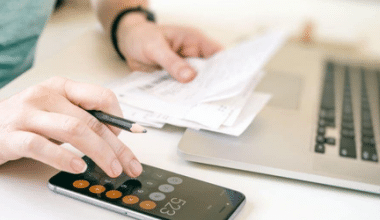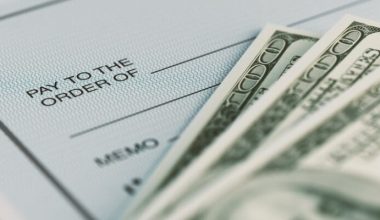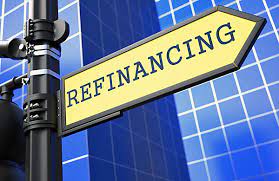Inventory control is a key benefit for businesses as it reduces the inventory cost on a company’s balance sheet when receiving goods. Inventory can be classified in three ways: materials, work in progress, and finished goods. This article contains everything you need to know about inventories on a balance sheet and lots more. Let’s go over all you need to know. Keep reading.
What is Inventory?
Inventory is a balance-sheet current asset account that includes all raw materials, work-in-progress, and finished commodities a company has amassed. Because it is frequently regarded as the most illiquid of all current assets, it is removed from the numerator in the fast ratio computation.
Inventories on a Balance Sheet
When discussing inventories on the balance sheet, an inventory balance sheet shows how much cash your business has on the shelves or in stock.
As earlier mentioned, inventories are classified as working capital on a company’s balance sheet and serve as a buffer between manufacturing and order fulfillment.
When an inventory item is sold, its holding cost is transferred to the income statement’s Cost of Sales (COGS) category. Some examples of inventories include:
#1. Raw Materials
Raw materials are the elements that a corporation uses to manufacture and finish products. Eventually, when the product is completed, the raw materials are often indistinguishable from their original form, e.g., B., the oil from which shampoo is made.
#2. Components
Components are raw materials in the sense that they are the materials that a company uses to create and finish products, except that they remain recognizable when the product is finished, like a screw.
#3. WIP (Work in progress)
WIP inventory pertains to commodities in production and comprises raw materials or components, labor, overhead, and packaging materials.
#4. Finished Goods
Finished goods are commodities that are sold and available for use.
#5. Maintenance, Repair, and Operations (MRO) Assets
This is inventory, often in the form of operating assets, that supports the manufacture of a product or the maintenance of a business.
#6. Packaging and packaging materials:
There are three types of packaging materials. Primary packaging protects the product and makes it usable. Secondary packaging is the packaging for the finished product and may contain labels or SKU information. Tertiary packaging is collective packaging for transport.
#7. Contingency Inventory and Anticipation Inventory
Contingency inventory is the additional inventory that business purchases and stores to cover for unexpected events. Safety stock has storage costs but supports customer satisfaction. Furthermore, forward inventory consists of raw materials or finished items that a company purchases based on sales and production trends. If the price of a commodity is increasing or nearing peak sales, a company may purchase safety stock.
#8. Inventory Decoupling
Inventory decoupling is used for additional items or labor underway at each production line station to avoid work stoppages.
While all companies can have safety stock, decoupled inventory management makes sense when parts of the line run at different speeds and only applies to companies that manufacture goods.
#9. Cycle stock
Businesses order circular inventory in batches to get the right amount at the lowest cost.
#10. Services Inventory
Service inventory is a service accounting concept that relates to the number of services a company can provide in a given period. For example, a hotel with 10 rooms has an inventory of 70 nights per week.
#11. In-Transit Inventory
Also referred to as inventory-in-process. Inventory can take weeks to move during transit between facilities.
#12. Theoretical inventory
Also called book inventory, theoretical inventory is the minimum amount of inventory a business needs to complete a process without waiting. The theoretical inventory is mainly used in production and the food industry. This is measured using the actual vs. theoretical formula.
#13. Excess Inventory:
Also known as stale inventory, excess inventory is unsold or unused goods or commodities that a business is unlikely to use or sell but you still pay to store.
How to Find Inventory on Balance Sheet.
You must follow these vital steps to find inventories on the balance sheet. If you do so, you should go to go. Check them out…
#1. Creating/Beginning Inventory
To calculate/find your inventory numbers on the balance sheet for each period, you need a starting number representing your company’s total inventory on the first day of the accounting period.
This number represents anything your business can use to generate revenue for the period.
Using the opening balance formula will help you understand the value of this balance at the beginning of this accounting period.
Use the balance sheet for the last period to calculate the opening balance. Start by finding the cost of goods sold (COGS) for the previous period.
If it costs you $1 to make each taco and you sold 1,200 tacos, your COGS for the period is $1,200.
Go through your catalogs to find your ending inventory and the amount of new inventory you purchased in the most recent accounting period.
If you have enough ending inventory to make 300 more tacos and bought enough to make 800 more tacos during the period, use these numbers to calculate the beginning inventory.
Add the ending inventory to COGS. Example: $300 + $1,200 = $1,500. To calculate your new starting inventory, subtract the amount of inventory purchased from this amount.
$1500 – $800 = $700. Your beginning inventory for the fiscal period is $700.
#2. Calculating Closing Inventory
In its simplest form, ending inventory is the materials remaining at the end of a fiscal period that is still being sold, generating revenue for the business.
Closing inventory is the value of goods still available for sale at the end of the accounting period. The formula for ending inventory is similar to that for starting inventory.
Take the opening balance you calculated at the beginning of the accounting period. The initial inventory of taco ingredients at this store was $700.
Then add the cost of any new purchases added to the business during the current fiscal period. If you bought $2,000 more inventory, your number would be $2,700.
Finally, subtract the cost of goods sold when calculating it at the end of the accounting period.
If you’ve sold 2,500 tacos, your cost price is $2,500. Subtract that from $2,700, and you have an ending inventory of ingredients worth $200.
Inventory Balance Formula
The basic formula for calculating inventory balance is easy, guys; use this
Beginning inventory (BI) + net purchases – COGS = ending inventory
Inventory Balance Formula
The beginning inventory is always the ending inventory of the last period. Net purchases are the items you have purchased and added to your inventory. The manufacturing cost of goods sold includes purchasing or producing finished goods ready for sale.
The easiest way to calculate the ending inventory is to take a physical inventory count. Still, taking a physical inventory doesn’t make sense, especially if you have a lot of inventory to take a physical count.
When Should Inventories Be Recorded on the Balance Sheet?
Inventory is recorded and documented on a company’s balance sheet at “its cost.” When an inventory item is sold, the cost of the commodity is omitted from inventory, and the cost is documented on the company’s income statement as a cost of goods sold.
How Is Inventory Listed on the Balance Sheet?
Inventory is listed as a current asset on a firm’s balance sheets and a shield between manufacturing and order fulfillment.
What Does Inventory Tell You About a Company?
Inventory turnover rate is one approach to gauging a company’s performance. When a company sells goods more quickly than its competitors, it incurs reduced holding costs and lower opportunity costs. As a result, they frequently exceed, as this improves the efficiency of their product sales.
Conclusions
So, that’s all on inventory on the balance sheet, and You must ensure you follow the steps discussed when finding inventory on balance sheets so you don’t run at a loss.
Inventories On Balance Sheet FAQs
What reports 3 types of inventory on balance sheets?
Manufacturing corporations categorize inventory into three sectors on their balance sheet. These involve raw materials, work-in-progress, and finished goods.
What are the 4 types of inventory?
They include
- Raw materials
- Components
- Work in progress
- Finished goods
Is inventory an asset or liability?
For accounting purposes, inventory is always considered a current asset because a company generally plans to sell the finished products within a year.
Is inventory a current asset?
Yes, it is a current asset.
Related Articles
- Liquidity Ratio: Types, Formulas, and Calculations
- Best 15+ INVENTORY SYSTEMS FOR SMALL BUSINESS in 2022 (+ Free Options)
- CUTE SMALL BUSINESS PACKAGING IDEAS FOR YOUR BUSINESS IN 2023
- How To Calculate Average Inventory- A Complete Step-by-Step Guide
- MATERIAL MANAGEMENT SYSTEM: Guide To The Material Management Process






